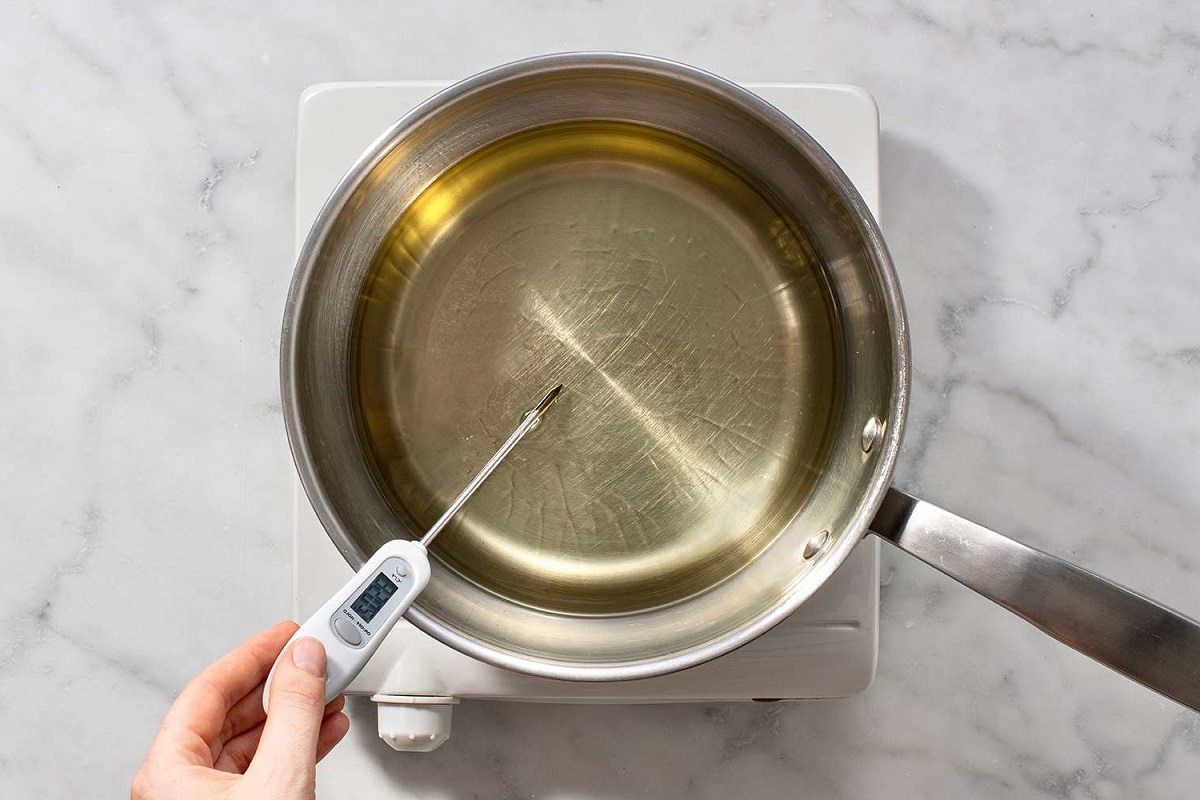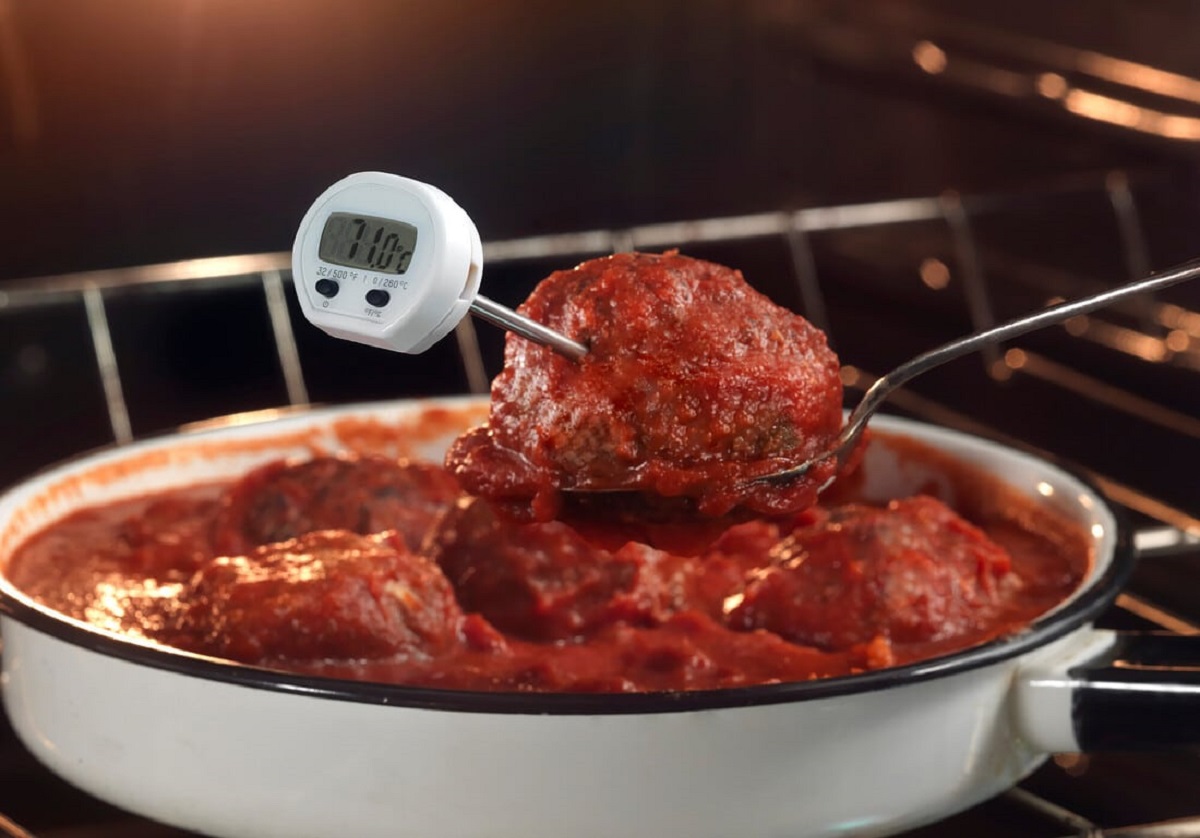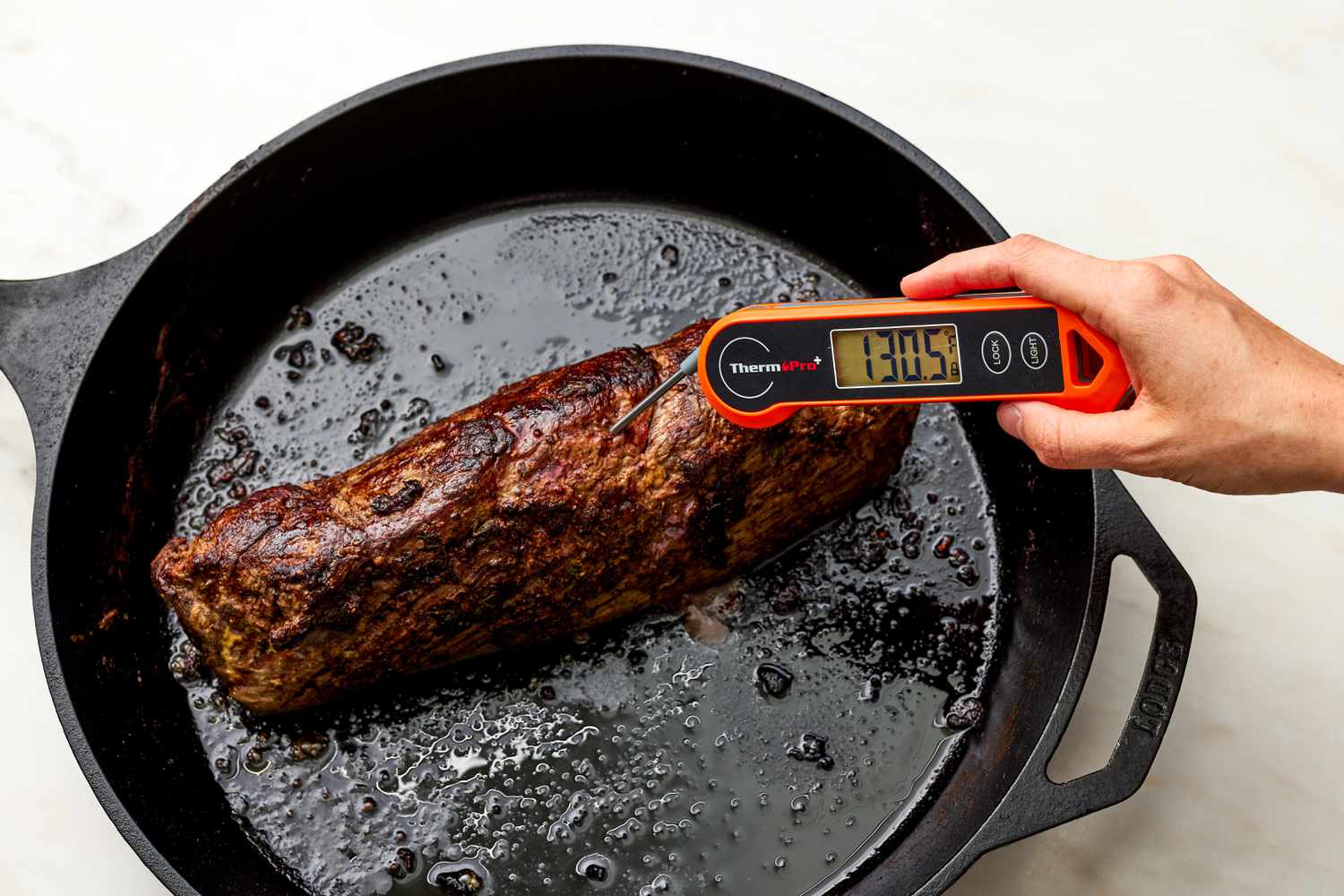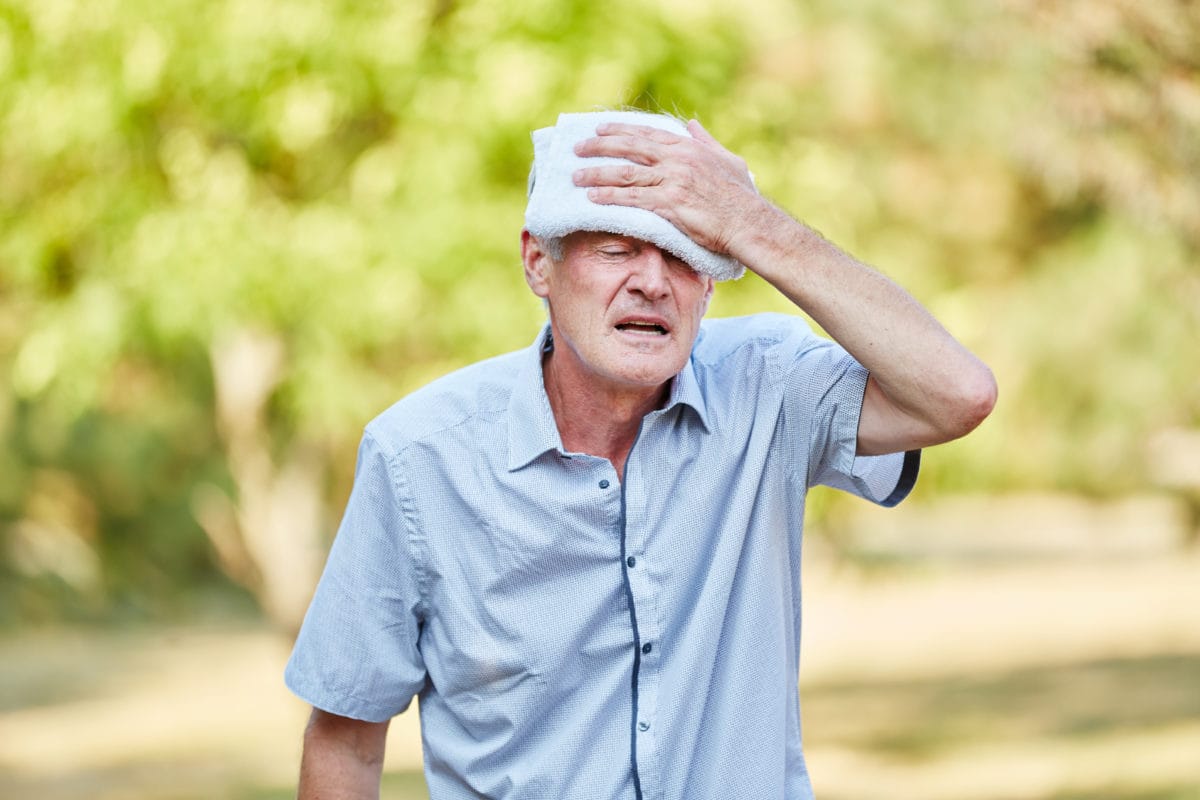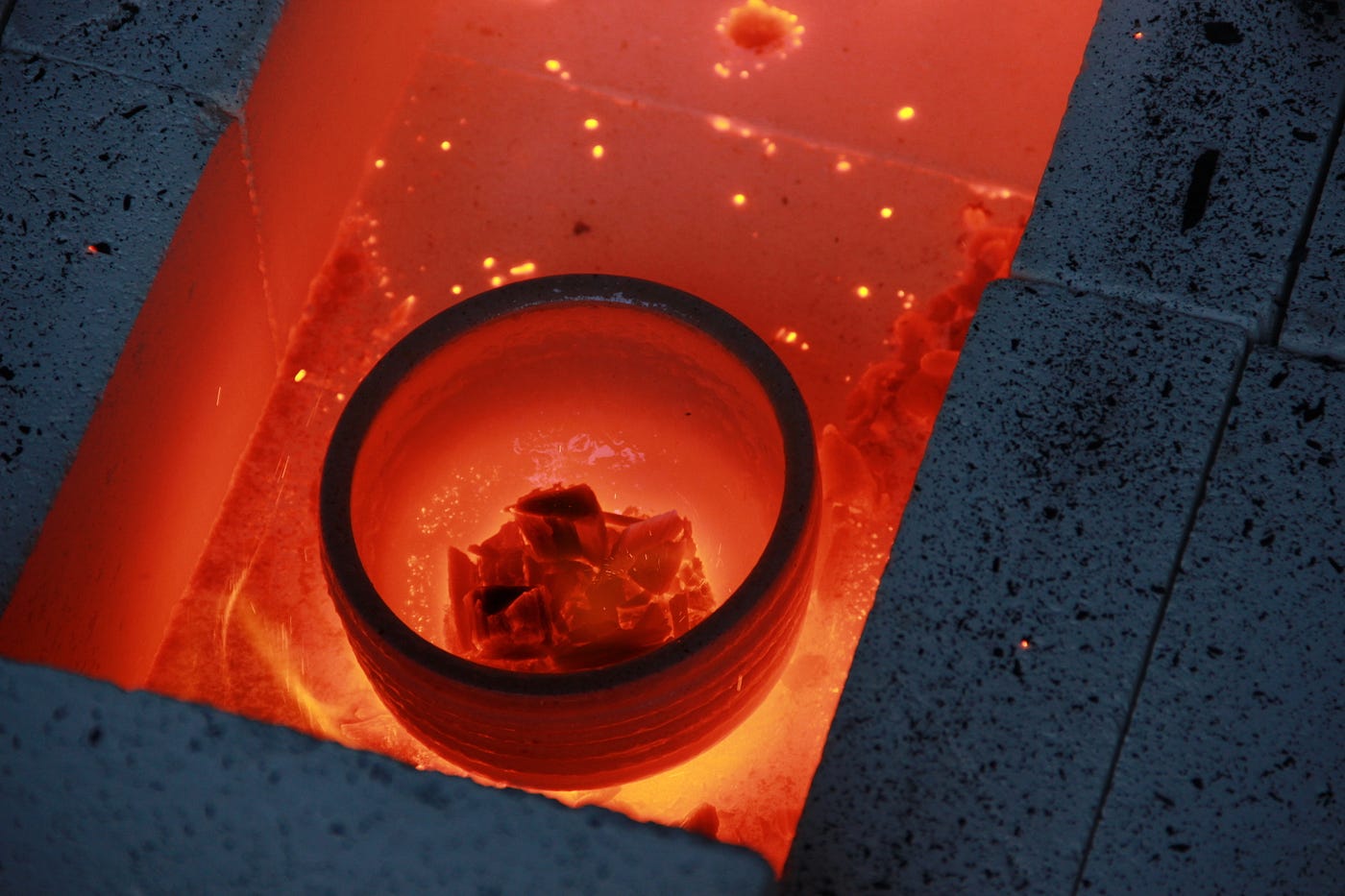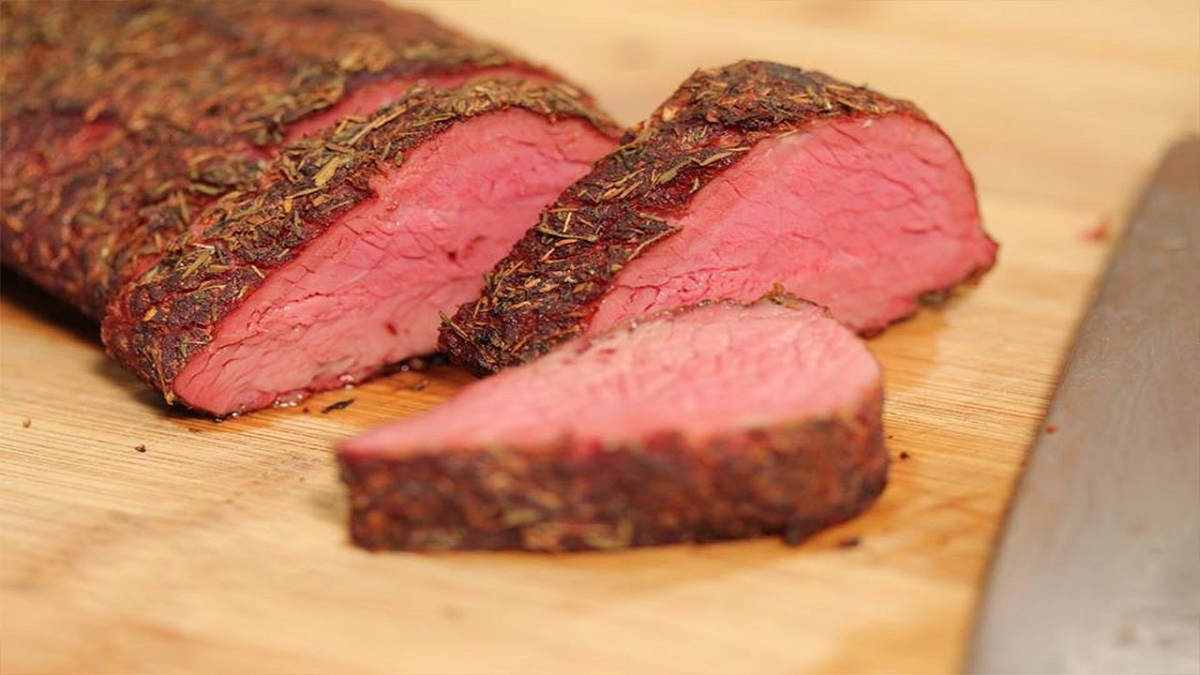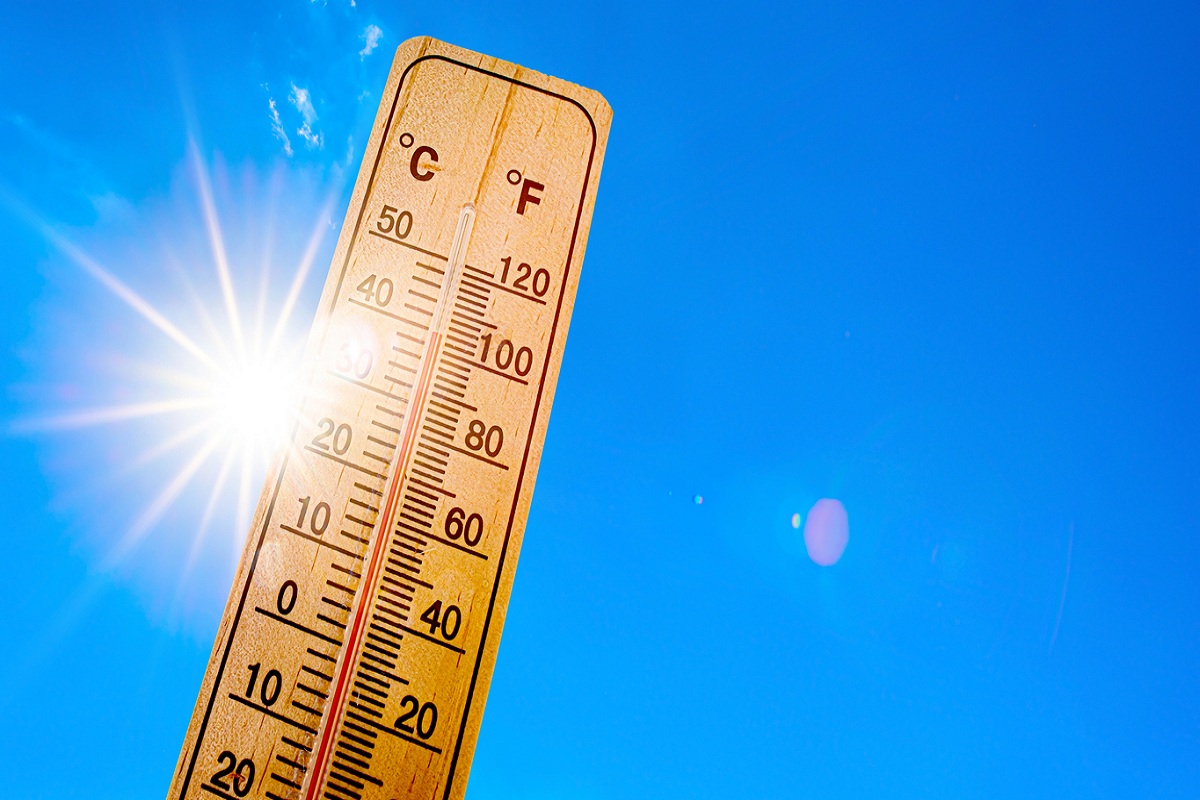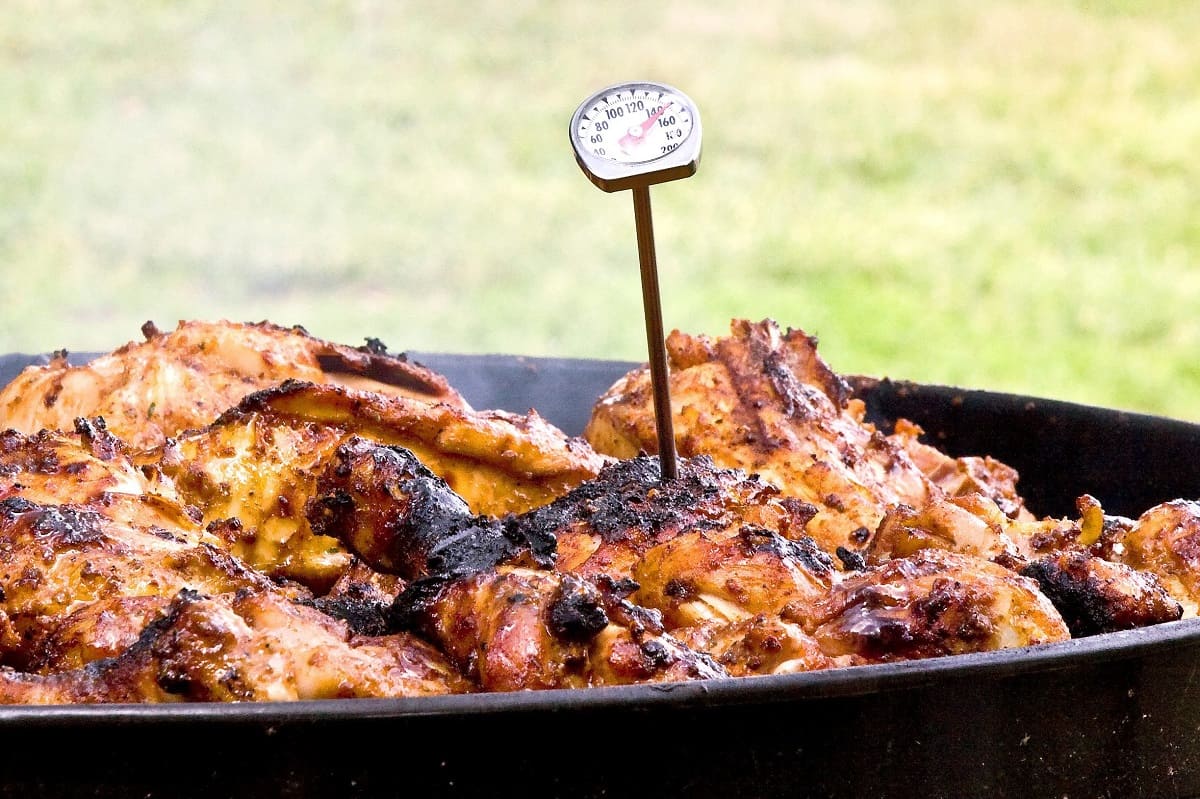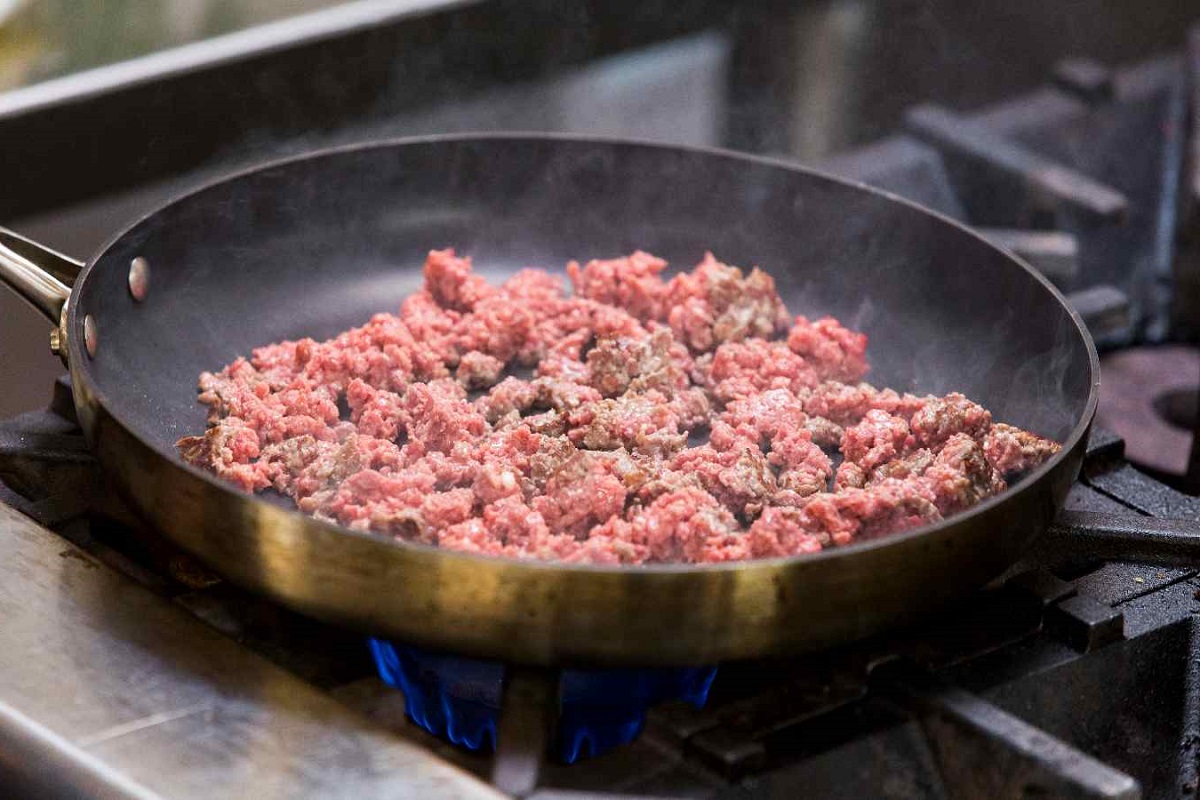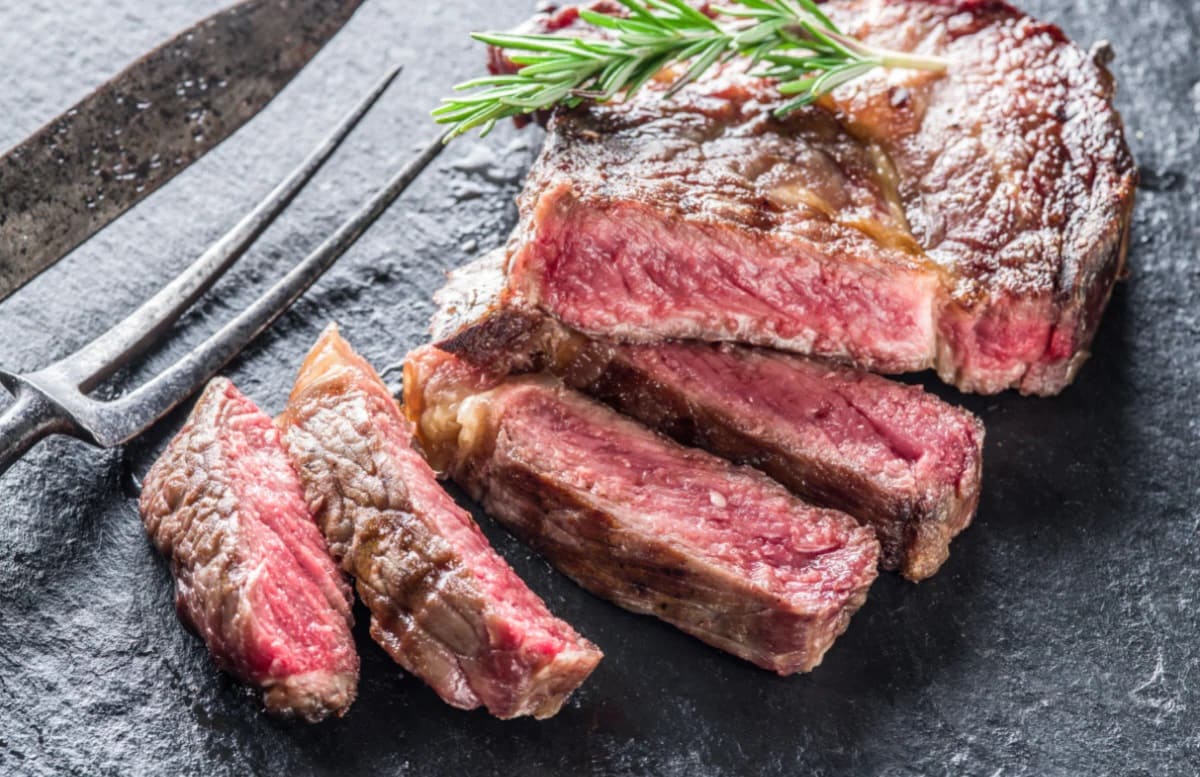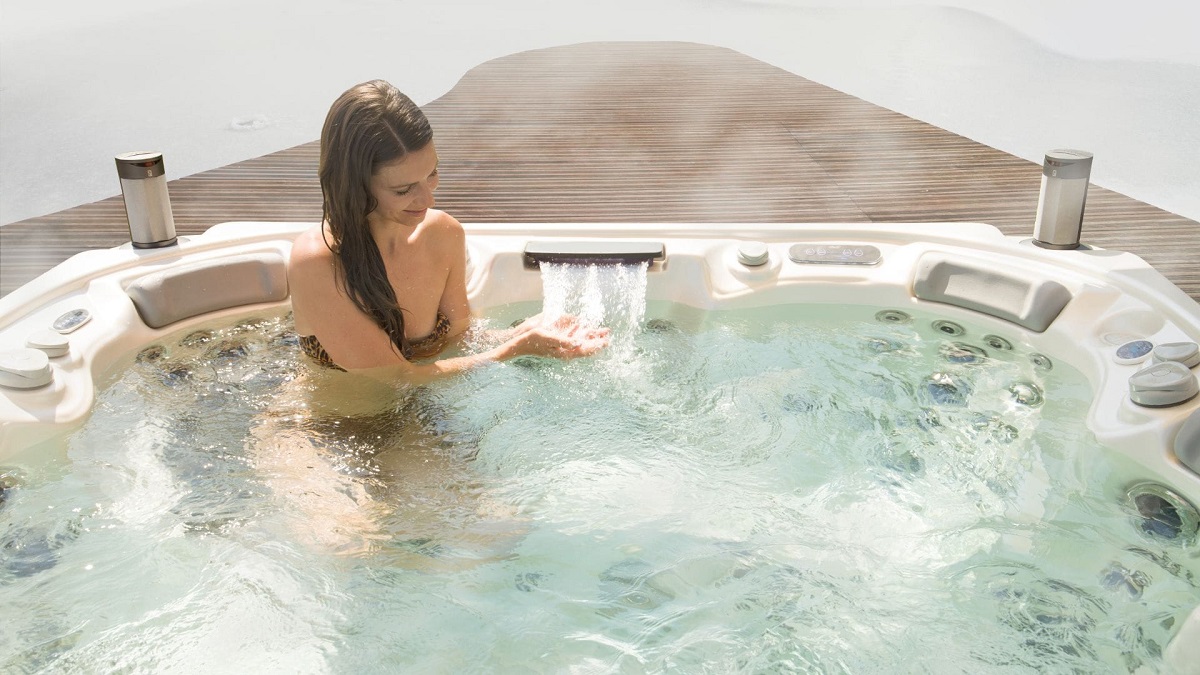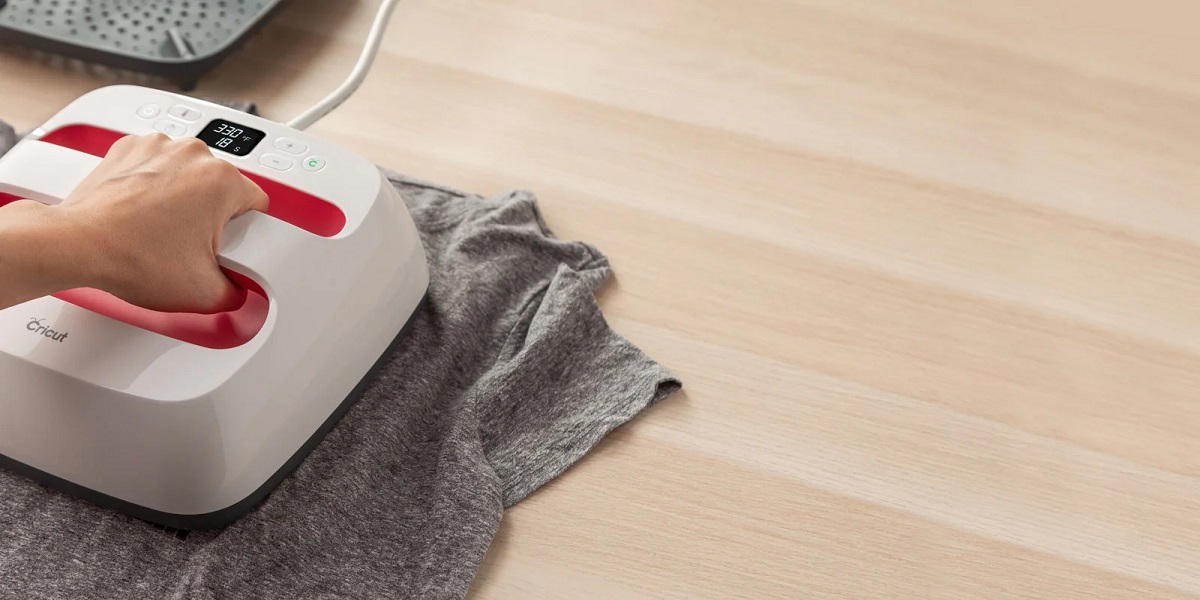Home>Culinary & Beverages>Stove Top Temperature Guide: Understanding Heat Levels For Cooking
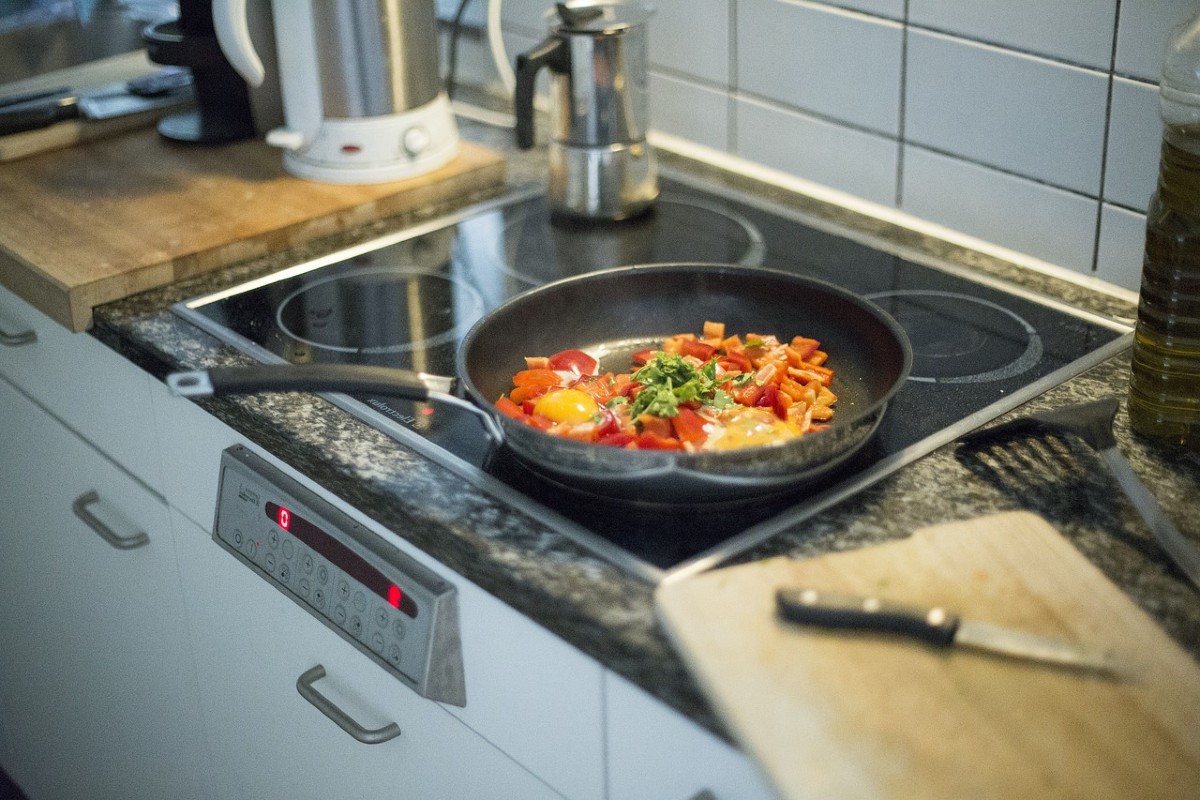

Culinary & Beverages
Stove Top Temperature Guide: Understanding Heat Levels For Cooking
Published: March 2, 2024
Discover the perfect stove top temperature guide for cooking with our comprehensive heat level breakdown. Enhance your culinary and beverage creations with precise heat control.
(Many of the links in this article redirect to a specific reviewed product. Your purchase of these products through affiliate links helps to generate commission for Temperatures.com, at no extra cost. Learn more)
Table of Contents
Introduction
Understanding stove top temperature is crucial for achieving culinary success. Whether you're a novice cook or a seasoned chef, mastering heat levels is fundamental to creating delectable dishes. The ability to discern between low, medium, and high heat, and knowing when to adjust the temperature, can significantly impact the outcome of your cooking endeavors.
In this comprehensive guide, we will delve into the nuances of stove top temperature, providing valuable insights into the art of heat management. From the gentle simmer of low heat to the sizzling intensity of high heat, we will explore the diverse range of temperatures and their respective applications in the culinary world. By the end of this guide, you will have gained a deeper understanding of how heat levels influence the cooking process, empowering you to elevate your culinary skills to new heights.
Let's embark on this enlightening journey through the realm of stove top temperature, where precision and intuition converge to produce gastronomic delights.
Importance of Understanding Heat Levels
Understanding heat levels is the cornerstone of culinary mastery. The ability to discern and manipulate stove top temperatures is a fundamental skill that can make or break a dish. Each heat level serves a distinct purpose, influencing the texture, flavor, and overall outcome of the food being prepared. By comprehending the nuances of heat, chefs and home cooks alike can exercise precise control over the cooking process, resulting in consistently exceptional meals.
One of the primary reasons why understanding heat levels is crucial lies in the diverse range of cooking techniques. From gentle simmering to rapid searing, each method necessitates a specific heat level to achieve optimal results. For instance, delicate ingredients such as seafood and sauces often require low heat to prevent scorching and maintain delicate flavors. On the other hand, high heat is essential for achieving a caramelized crust on steaks and imparting a smoky char to vegetables.
Moreover, understanding heat levels enables individuals to adapt to different cooking equipment and fuel sources. Whether using gas, electric, or induction stoves, the ability to gauge and adjust heat levels accordingly is indispensable. Furthermore, for those who enjoy outdoor cooking, such as grilling or campfire cuisine, a thorough understanding of heat levels is essential for harnessing the raw power of open flames.
Beyond the technical aspects, understanding heat levels fosters a deeper connection to the cooking process. It encourages a heightened sense of awareness and intuition, allowing cooks to engage with their ingredients on a more profound level. By observing the subtle changes in heat and its impact on various ingredients, individuals can develop a keen culinary instinct, transcending the realm of mere recipes and measurements.
In essence, the importance of understanding heat levels extends far beyond the realm of practicality. It embodies a holistic approach to cooking, encompassing technical proficiency, creative expression, and a profound appreciation for the transformative power of heat. As we delve into the specific heat levels and their applications, it becomes evident that mastering this fundamental aspect of cooking is an indispensable skill for anyone seeking to elevate their culinary prowess.
Low Heat Cooking
Low heat cooking is characterized by gentle, sustained warmth that delicately coaxes out the flavors and textures of ingredients without subjecting them to intense heat. This method is ideal for dishes that require slow and gradual cooking, allowing the flavors to meld and develop over time. When cooking over low heat, it's essential to exercise patience and precision, as this approach yields nuanced and tender results.
One of the quintessential applications of low heat cooking is the art of simmering. This technique involves maintaining a low, steady heat to gently cook ingredients in a liquid, allowing the flavors to infuse and the textures to soften. Soups, stews, and braises benefit greatly from simmering over low heat, as it allows the ingredients to meld together harmoniously, resulting in rich, complex flavors and succulent, tender meats.
Furthermore, low heat is instrumental in the preparation of delicate sauces and custards. By carefully controlling the temperature, cooks can prevent curdling or scorching, ensuring that the sauces and custards achieve a velvety smooth consistency. This gentle approach to heating also enables the gradual thickening of sauces, allowing the flavors to concentrate and develop depth without the risk of burning.
In addition to its culinary applications, low heat cooking embodies a sense of mindfulness and attentiveness. It encourages cooks to engage with the cooking process on a deeper level, as they carefully monitor the subtle transformations taking place within the pot or pan. This method fosters a connection to the ingredients and the alchemical process of cooking, inviting individuals to embrace the art of patience and restraint in the pursuit of gastronomic excellence.
In summary, low heat cooking is a foundational technique that underpins a myriad of culinary creations. Its gentle warmth and unhurried pace allow for the development of complex flavors and tender textures, making it an indispensable tool in the culinary repertoire. As we continue to explore the nuances of stove top temperature, it becomes evident that low heat cooking embodies a profound appreciation for the transformative power of gentle warmth in the culinary arts.
Medium Heat Cooking
Medium heat cooking occupies a pivotal position in the spectrum of stove top temperatures, offering a versatile range of applications that cater to a diverse array of culinary endeavors. Defined by its moderate intensity, medium heat strikes a delicate balance between the gentle warmth of low heat and the searing intensity of high heat. This nuanced temperature level serves as a cornerstone for numerous cooking techniques, allowing for the development of rich flavors, enticing aromas, and appealing textures.
One of the hallmark applications of medium heat cooking is the art of sautéing. This technique involves cooking ingredients in a shallow pan over medium heat, allowing them to caramelize and develop a golden-brown exterior while retaining their natural juiciness and tenderness. Whether it's the sizzle of onions and garlic in a fragrant stir-fry or the searing of succulent chicken breasts, medium heat provides the ideal environment for achieving the perfect balance of color, flavor, and texture.
Moreover, medium heat is instrumental in the preparation of a wide range of dishes, including seared meats, pan-fried vegetables, and delicate seafood. By harnessing the moderate warmth of medium heat, cooks can achieve a desirable Maillard reaction, resulting in the development of complex, savory flavors and a tantalizing crust on meats and vegetables. This transformative process imbues the ingredients with a depth of flavor and visual appeal that elevates the overall dining experience.
In addition to its role in direct heat applications, medium heat serves as a foundation for gentle simmering and reducing sauces. When preparing pan sauces or gravies, maintaining a medium heat allows for the gradual reduction of liquids, intensifying their flavors and creating luscious, velvety textures. This controlled evaporation process concentrates the essence of the ingredients, resulting in sauces that beautifully complement a wide range of dishes.
Furthermore, medium heat is conducive to achieving the perfect balance between tenderness and caramelization when grilling or searing proteins. Whether it's a succulent steak or a fillet of fish, medium heat allows for even cooking, ensuring that the exterior develops a delectable crust while the interior retains its juiciness and succulence.
In essence, medium heat cooking embodies a harmonious interplay of flavors, textures, and aromas, making it an indispensable component of the culinary repertoire. Its moderate warmth provides a canvas for culinary creativity, allowing cooks to coax out the inherent qualities of ingredients while imbuing them with depth and character. As we continue to explore the nuances of stove top temperature, it becomes evident that medium heat cooking occupies a central role in the art of gastronomy, offering a versatile platform for culinary expression and innovation.
High Heat Cooking
High heat cooking represents the pinnacle of intensity in the realm of stove top temperatures, unleashing a torrent of searing energy that transforms ingredients with unparalleled vigor. This formidable heat level is characterized by its ability to rapidly sear, caramelize, and impart a tantalizing char to a diverse array of culinary creations. From the blistering heat of a cast-iron skillet to the fierce flames of a grill, high heat cooking commands attention and demands precision, offering a transformative canvas for culinary innovation.
One of the quintessential applications of high heat cooking lies in the art of searing. Whether it's a succulent steak, a fillet of fish, or a medley of vibrant vegetables, high heat searing creates a caramelized crust that locks in moisture and imparts a tantalizing depth of flavor. The intense heat triggers the Maillard reaction, resulting in the development of complex, savory compounds that elevate the sensory experience of each bite. This transformative process imbues the ingredients with a tantalizing smokiness and a visually striking char, adding a layer of depth and character to the culinary composition.
Furthermore, high heat cooking is instrumental in achieving the perfect balance between tenderness and caramelization when grilling or broiling. The searing heat of the grill or the radiant intensity of the broiler creates a symphony of flavors and textures, infusing meats, vegetables, and fruits with a tantalizing smokiness and a charred allure. Whether it's the sizzle of kebabs on the grill or the blistering heat of broiled peppers, high heat cooking offers a platform for creating dishes that are imbued with an irresistible allure and a captivating complexity.
In addition to its role in direct heat applications, high heat is essential for achieving rapid stir-frying, imparting a delightful wok hei to dishes that are vibrant, aromatic, and bursting with flavor. The intense heat of the wok or skillet creates a dynamic environment for the rapid searing of ingredients, resulting in dishes that are imbued with a tantalizing smokiness and a harmonious blend of textures. This rapid cooking method preserves the natural vibrancy and crispness of the ingredients, yielding dishes that are as visually appealing as they are delectable.
In essence, high heat cooking embodies a symphony of intensity, creativity, and transformative power, offering a dynamic platform for culinary expression and innovation. Its searing heat unleashes a torrent of energy that imbues ingredients with a tantalizing depth of flavor, a visually striking allure, and a captivating complexity. As we continue to explore the nuances of stove top temperature, it becomes evident that high heat cooking occupies a central role in the art of gastronomy, offering a transformative canvas for culinary mastery and sensory delight.
Adjusting Heat Levels for Different Cooking Techniques
Adjusting heat levels is a fundamental aspect of culinary finesse, allowing cooks to tailor the intensity of heat to suit the specific requirements of diverse cooking techniques. Whether it's the gentle simmer of a delicate sauce or the fierce sear of a steak, the ability to modulate heat levels with precision is essential for achieving exceptional culinary results.
When it comes to adjusting heat levels for different cooking techniques, a nuanced understanding of the interplay between heat and ingredients is paramount. For delicate preparations such as poaching or simmering, low heat is the preferred choice, as it gently coaxes out flavors without subjecting the ingredients to harsh temperatures. This slow and steady approach allows for the gradual infusion of flavors and the development of tender textures, resulting in dishes that are imbued with subtlety and finesse.
On the other hand, techniques such as sautéing, pan-searing, and stir-frying demand the application of medium to high heat, depending on the specific requirements of the dish. Medium heat facilitates the caramelization of ingredients, creating a golden-brown exterior while preserving their natural juiciness and tenderness. This controlled intensity allows for the development of rich flavors and enticing aromas, enhancing the overall sensory experience of the dish.
Furthermore, adjusting heat levels is crucial when transitioning between different stages of a recipe. For instance, when preparing a pan sauce after searing a protein, reducing the heat to medium-low allows for the gradual thickening of the sauce without scorching, resulting in a luscious accompaniment that beautifully complements the main dish.
In the realm of high heat cooking, such as searing and grilling, precise adjustments are essential to achieve the perfect balance between caramelization and tenderness. The initial blast of high heat creates a tantalizing crust on meats and vegetables, sealing in moisture and flavor. However, transitioning to a lower heat level allows for the gentle completion of the cooking process, ensuring that the interior of the ingredients reaches the desired level of doneness without becoming overly charred.
In essence, the art of adjusting heat levels for different cooking techniques embodies a symphony of precision, intuition, and culinary expertise. By mastering the delicate dance of heat modulation, cooks can elevate their dishes to new heights, imbuing them with depth, character, and a captivating sensory allure. As we continue to explore the nuances of stove top temperature, it becomes evident that the art of adjusting heat levels is a cornerstone of culinary mastery, offering a dynamic canvas for culinary expression and innovation.
Tips for Using Stove Top Temperature Guide
-
Familiarize Yourself with Your Stove: Get to know the nuances of your stove and how it distributes heat across different burners. Some burners may have hot spots, while others may provide more consistent heat. Understanding these characteristics will empower you to make informed decisions when selecting the appropriate burner for your cooking endeavors.
-
Invest in Quality Cookware: Quality cookware with good heat conductivity can make a significant difference in your cooking experience. Invest in pots and pans that distribute heat evenly to ensure that your ingredients are cooked uniformly, minimizing the risk of hot spots or uneven cooking.
-
Use the Right Utensils: When cooking over different heat levels, it's essential to use utensils that are suitable for the task at hand. For high heat cooking, opt for heat-resistant utensils that can withstand intense temperatures without warping or degrading. For delicate low heat preparations, choose utensils that allow for precise control and gentle handling of ingredients.
-
Practice Patience: When adjusting heat levels, allow the stove and cookware to respond to the changes gradually. Sudden adjustments can lead to erratic temperature fluctuations, impacting the quality of your dishes. Exercise patience and give the stove and cookware time to reach the desired temperature.
-
Monitor and Adjust: Continuously monitor the heat levels throughout the cooking process and make adjustments as needed. Pay attention to visual cues such as simmering liquids, sizzling sounds, and the appearance of ingredients to gauge the effectiveness of the current heat level. Don't hesitate to make subtle adjustments to achieve the desired outcome.
-
Embrace Experimentation: Use the stove top temperature guide as a foundation for your culinary explorations, but don't be afraid to experiment and adapt based on your observations. Every kitchen and every dish is unique, and embracing a spirit of experimentation will allow you to refine your understanding of heat levels and their impact on various ingredients.
-
Learn from Experience: Over time, you will develop an intuitive sense of how different ingredients and dishes respond to varying heat levels. Embrace the learning process and draw insights from your experiences in the kitchen. This experiential knowledge will become a valuable asset as you continue to refine your culinary skills.
-
Seek Inspiration: Explore diverse cuisines and cooking traditions to gain insights into how different cultures leverage stove top temperatures to create distinctive dishes. Drawing inspiration from global culinary practices can expand your understanding of heat management and inspire you to infuse new flavors and techniques into your cooking repertoire.
By incorporating these tips into your culinary journey, you will not only master the art of stove top temperature management but also elevate your cooking to new heights, creating dishes that are imbued with precision, depth, and a symphony of flavors.
Conclusion
In conclusion, the art of understanding and managing stove top temperatures is a transformative journey that transcends the realm of mere culinary technique. It embodies a symphony of precision, intuition, and creativity, offering a dynamic canvas for culinary expression and innovation. From the gentle warmth of low heat to the searing intensity of high heat, each temperature level plays a pivotal role in shaping the flavors, textures, and aromas of the dishes we create.
By delving into the nuances of low, medium, and high heat cooking, we have gained a deeper appreciation for the profound impact that stove top temperatures have on the culinary landscape. We have explored the delicate art of simmering over low heat, where flavors meld and textures soften with patience and precision. We have embraced the versatile applications of medium heat, where sautéing, pan-searing, and gentle reductions unfold with a harmonious interplay of flavors and aromas. We have marveled at the transformative power of high heat, where searing, grilling, and rapid stir-frying imbue ingredients with a tantalizing smokiness and a captivating complexity.
Furthermore, we have unraveled the art of adjusting heat levels for different cooking techniques, understanding the subtle dance of modulation that empowers us to tailor the intensity of heat to suit the specific requirements of diverse dishes. We have embraced the tips for using the stove top temperature guide, equipping ourselves with the knowledge and insight to navigate the culinary landscape with confidence and finesse.
As we conclude this enlightening journey through the realm of stove top temperature, we are reminded that the mastery of heat is not merely a technical skill but a profound expression of culinary artistry. It embodies a holistic approach to cooking, encompassing technical proficiency, creative expression, and a profound appreciation for the transformative power of heat. It fosters a deeper connection to the cooking process, inviting us to engage with our ingredients on a more profound level.
Ultimately, the understanding of stove top temperatures empowers us to create dishes that are imbued with precision, depth, and a symphony of flavors. It elevates our culinary prowess, enabling us to craft gastronomic delights that captivate the senses and nourish the soul. As we continue to refine our understanding of heat management, let us embrace the art of stove top temperature with reverence and enthusiasm, knowing that it is a timeless cornerstone of culinary mastery.
